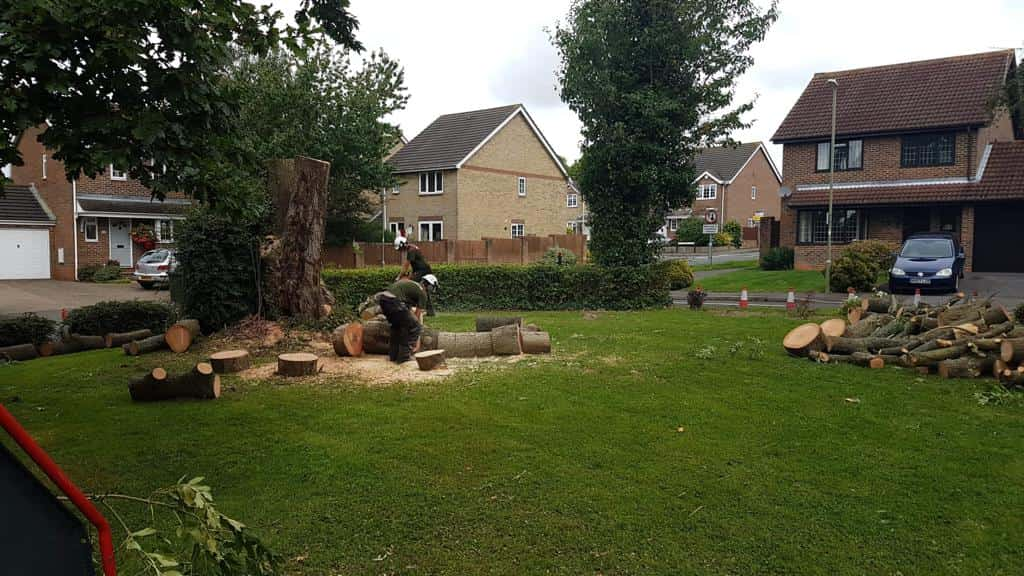Introduction
Hedges can be a beautiful and practical addition to any garden in Selsey or across West Sussex—offering privacy, wind protection and structure. But when left unmanaged, they can quickly become more of a problem than an asset. Overgrown hedges don’t just look unkempt—they hide a range of potential hazards that can compromise the safety, function and even the value of your outdoor space.
At LM Tree Surgery Selsey, we’re often called out to tackle overgrown boundaries, and in many cases, what we find lurking beneath is far worse than expected. This article outlines nine common garden risks concealed by unchecked hedge growth—and why keeping them properly trimmed is about more than appearance.
Key Takeaways
- Overgrown hedges often hide dangerous or damaging issues
- Routine trimming improves safety, visibility and garden access
- Proactive maintenance saves time, money and potential property damage
1. Trip Hazards and Obstructed Paths
When hedges grow over walkways, driveways or garden paths, they narrow access routes and hide uneven ground. Roots can lift paving, and falling leaves make surfaces slippery—turning a simple garden stroll into a risk. Children, older adults, or guests unfamiliar with the space are particularly vulnerable to trips and falls.
2. Pests and Vermin Sheltering Within
Thick, untrimmed hedges are the perfect hiding place for rodents, insects and even wasp nests. Without regular maintenance, these areas become breeding grounds for unwanted pests that can spread to your home, compost bins or sheds. Nesting activity often goes unnoticed until there’s a full-blown infestation.
3. Damage to Boundary Walls and Fences
Overgrown hedge roots and pressure from dense growth can cause significant damage to fences, posts or garden walls. Ivy and woody stems can wedge into cracks, shift panels or dislodge mortar. What starts as a neat green boundary can quickly result in costly repair work if left to expand unchecked.
4. Restricted Visibility and Line of Sight
Whether you’re reversing out of a driveway or watching children play in the garden, sightlines matter. Overgrown hedges can block your view of roads, footpaths or other key areas—making accidents more likely. For properties with front hedging, it’s also a key issue for pedestrian safety and general kerb appeal.
5. Hidden Rubbish and Fly-Tipping
Dense hedging can inadvertently encourage fly-tipping, especially along alleyways or unfenced sections of land. Rubbish often gets trapped or hidden underneath, including bottles, cans, plastics or worse—posing health and environmental risks. Insects and rodents are quick to follow where waste accumulates.
6. Deterioration of Lawn and Flower Beds
Overshadowing from thick hedges limits light and moisture for the surrounding garden. Grass may become patchy or mossy, while beds near the base struggle to thrive due to competition for nutrients and water. This unbalances the entire garden and makes it harder to cultivate healthy, vibrant planting.
7. Tree Saplings Taking Root Undetected
In overgrown hedges, it’s common to find unwanted tree saplings or fast-growing invasive species establishing themselves in the undergrowth. These can eventually grow into serious problems, disturbing walls, paving and underground drainage. The longer they’re left, the harder they are to remove without major disruption.
8. Fire Risk from Dry, Untended Growth
In dry summer conditions, unmaintained hedges with lots of deadwood can pose a fire hazard—particularly if they’re close to sheds, fences, or dry decking. Leaves, twigs and loose brush can fuel accidental fires, especially in high heat or from stray embers during a BBQ or bonfire.
9. Legal Disputes and Boundary Issues
Letting a hedge grow beyond your property line can cause tensions with neighbours or even legal disputes. If the hedge begins to block light, encroach on someone else’s garden, or damage shared fences, you could be held liable for the consequences. Keeping growth in check is not just neighbourly—it’s essential.
Conclusion
Overgrown hedges are more than a cosmetic issue—they’re often hiding a host of risks that affect safety, property integrity, and overall garden health. Routine trimming doesn’t just improve how your outdoor space looks—it prevents pests, protects boundaries, and keeps your garden accessible and enjoyable.
At LM Tree Surgery Selsey, we specialise in hedge reduction and maintenance for homes across West Sussex. If your hedges have got out of hand or you’re concerned about what may be hiding behind them, don’t wait for it to become a problem. Contact us today and we’ll help restore order to your garden—safely and professionally.
Call us on: 01243 217 387
Click here to find out more about LM Tree Surgery Selsey
Click here to complete our contact form and see how we can help with your tree needs.

